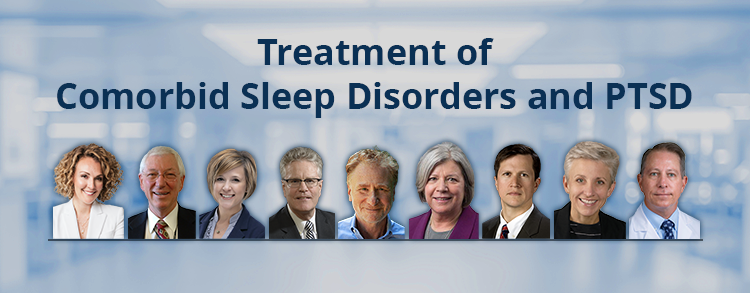Traumatic Brain Injury and Psychological Health
Treatment of Comorbid Sleep Disorders and PTSD




Posted May 14, 2024
Daniel Taylor, Ph.D., University of Arizona, Tucson, AZ
This project was managed by the CDMRP under the Psychological Health and Traumatic Brain Injury Research Program on behalf of the Military Operational Medicine Research Program.
Posttraumatic stress disorder affects up to 7% of Service Members and Veterans.1 While there are effective therapies, patients may continue to experience clinically significant symptoms of PTSD. Additionally, PTSD is comorbid with sleep disorders, like insomnia and nightmares, which also have effective treatments available. However, little guidance exists for how to simultaneously treat PTSD, insomnia, and nightmares.2
With Fiscal Year 2012 Psychological Health/Traumatic Brain Injury Research Program funding through the Consortium to Alleviate PTSD, Daniel Taylor, Ph.D., conducted a randomized clinical trial to understand the efficacy of cognitive behavioral therapy for concurrent treatment of PTSD, insomnia, and nightmares. Taylor and his team evaluated the efficacy of cognitive behavioral therapy for insomnia and nightmares, or CBT-I&N, and cognitive processing therapy, or CPT, for PTSD, within a population of active-duty Service Members and recently discharged veterans with all three disorders.
All 93 study participants were randomized to three groups, CBT-I&N delivered before CPT, CBT-I&N delivered after CPT, or CPT alone to understand whether adding CBT-I&N or the order of combined therapies affected patient outcomes. Taylor and his team compared the results of the groups on improvements in PTSD severity, insomnia severity index screening, sleep efficiency, and number of nightmares reported
Although the study was limited by the ability to enroll and maintain patients, the results indicated that the combined CBT-I&N and CPT outperformed CPT alone in reducing PTSD and sleep disorder symptoms. The three treatment groups successfully reduced PTSD symptoms. CBT-I&N groups, however, saw more significant reductions in insomnia symptoms and an increase in sleep efficiency. The results from this study showcase the efficacy of combined therapeutic efforts.
With support from this award and the results of this study, Taylor and his team developed a manual for treatment with CBT-I&N, to help guide healthcare providers and improve quality of care for patients.
Link:
Public and Technical Abstracts: STRONG STAR Consortium to Alleviate PTSD
Publications:
Taylor, D. J., Pruiksma, K. E., Mintz, J., Slavish, D. C., Wardle‐Pinkston, S., Dietch, J. R., ... & Consortium to Alleviate PTSD. (2023). Treatment of comorbid sleep disorders
and posttraumatic stress disorder in US active duty military personnel: A pilot randomized clinical trial. Journal of Traumatic Stress. 36, 712-726.
https://doi.org/10.1002/jts.22939
Taylor DJ, Pruiksma KE, Mintz J, et al. 2020. Treatment of comorbid sleep disorders and posttraumatic stress disorder in active duty military: Design and methodology of a randomized clinical trial. Consortium to Alleviate PTSD. Contemporary clinical trials 99:106186.
https://doi.org/10.1016/j.cct.2020.106186
Taylor DJ, Pruiksma KE, Hale W, et al. 2020. Sleep problems in active duty military personnel seeking treatment for posttraumatic stress disorder: presence, change, and impact on outcomes. Sleep 43(10): zsaa065.
https://doi.org/10.1093/sleep/zsaa065
References:
1How Common is PTSD in Veterans? - PTSD: National Center for PTSD. (2023). National Center for PTSD Home; U.S. Department of Veterans Affairs.
https://www.ptsd.va.gov/understand/common/common_veterans.asp.
2Sleep Problems and PTSD - PTSD: National Center for PTSD. (2023). PTSD: National Center for PTSD Home; U.S. Department of Veterans Affairs.
https://www.ptsd.va.gov/understand/related/sleep_problems.asp.
Last updated Friday, March 7, 2025














